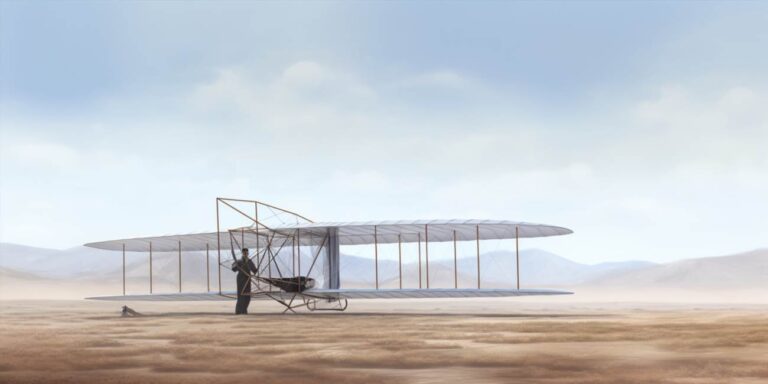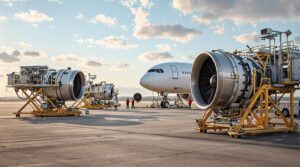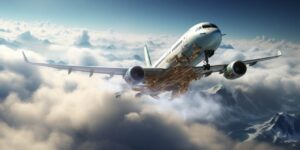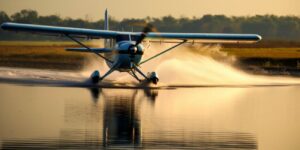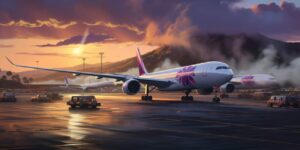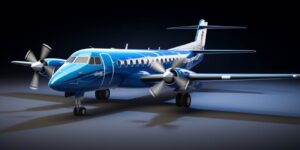Early on, the brothers delved into mechanics, sparking their curiosity and eventual devotion to aeronautics. In their bicycle shop, nestled in Dayton, Ohio, they refined their craft, experimenting with gliders and propellers, driven by an unyielding ambition to conquer the skies.
One pivotal moment was their breakthrough in understanding the complexities of controlling an aircraft. The concept of three-axis control, achieved by warping the wings, was their ingenious contribution to flight. This pivotal realization catapulted their quest toward the first successful powered flight.
| Year | Milestone |
|---|---|
| 1903 | The Wright Flyer – the first powered, controlled flight |
| 1905 | Development of the Flyer III, capable of sustained flights |
Their crowning achievement came in 1903 when they soared above the dunes of Kitty Hawk, North Carolina. The Wright brothers achieved the seemingly impossible: a 12-second flight that forever changed human existence. This monumental event marked the genesis of modern aviation, sparking a revolution that transformed the world.
Their persistence and meticulous experimentation laid the groundwork for the evolution of aviation. Beyond their groundbreaking success, the Wright brothers remained committed to sharing their knowledge, contributing to the advancement of aviation technology.
Their legacy resonates profoundly, serving as an enduring testament to the power of human ingenuity and relentless pursuit. The Wright brothers‘ trailblazing journey through the skies reshaped the world, heralding a new era where the impossible became achievable.
The wright brothers’ early experiments with gliders and kites
The Wright brothers embarked on their journey into aviation with a series of experiments involving gliders and kites, laying the foundation for powered flight. In the late 19th and early 20th centuries, their innovative approach to aeronautics set the stage for the monumental achievement of sustained, controlled flight.
Wilbur and Orville Wright began their exploration by studying the works of previous aviation pioneers and engaging in a meticulous examination of the principles governing flight. Armed with a deep understanding of aerodynamics, they transitioned from theoretical knowledge to practical experimentation.
Their early experiments with kites served as a crucial testing ground for understanding the dynamics of lift and control. Kites, with their simplicity, allowed the brothers to grasp the fundamentals of aerodynamic forces. Through trial and error, they fine-tuned their designs, boldly pushing the boundaries of traditional aeronautical thought.
Transitioning from kites to gliders, the Wright brothers sought to apply their insights to larger, manned aircraft. Their first glider experiments, conducted in the sandy dunes of Kitty Hawk, North Carolina, were marked by both success and challenges. The brothers faced the harsh reality of flight dynamics, experimenting with wing shapes, control mechanisms, and the critical aspect of stability.
Tables would be a valuable tool to encapsulate the iterative nature of their glider designs. Listing various prototypes, their wing dimensions, and corresponding performance characteristics would provide a comprehensive view of the Wright brothers’ progression.
Their glider models evolved, incorporating adjustments based on empirical data gathered from each test flight. The quest for the perfect balance between lift and stability fueled their determination. Each setback was met with a resilient spirit, propelling them closer to the breakthrough they sought.
The brothers’ bold approach to experimentation also included utilizing a wind tunnel, a revolutionary tool at the time. This allowed them to systematically test different wing shapes and control surfaces, providing invaluable insights into aerodynamic efficiency.
As the Wright brothers delved deeper into their aeronautical odyssey, the culmination of their efforts would eventually lead to the iconic powered flight at Kitty Hawk in 1903. However, the significance of their early glider and kite experiments cannot be understated. These bold pioneers not only defied gravity but also challenged conventional wisdom, paving the way for the age of aviation.
Overcoming challenges: the wright brothers’ persistence leads to triumph
The Wright Brothers embarked on an audacious journey that epitomized persistence, rewriting the narrative of human flight. Their unwavering commitment to conquering the skies was a testament to the power of resilience in the face of seemingly insurmountable challenges. In the early 20th century, the aviation landscape was clouded with skepticism, yet the Wright Brothers remained resolute in their pursuit.
Wilbur and Orville Wright confronted myriad problems during their quest for flight. Aerodynamics was an enigma waiting to be deciphered, and the duo found themselves immersed in a constant battle against gravity. Through countless setbacks and failures, they embraced the essence of problem-solving as a dynamic process, refining their designs with each disappointment.
Their workshop became an arena for innovation, where the brothers meticulously analyzed each setback, fine-tuning their aircraft with a blend of ingenuity and technical acumen. The persistence that fueled their efforts was not a blind adherence to a singular approach but a dynamic adaptation to challenges that demanded creative solutions.
The Wright Brothers’ journey was a narrative of perpetual persistence, marked by a refusal to succumb to the gravitational pull of defeat. In a world where conventional wisdom dictated that humans couldn’t fly, Wilbur and Orville Wright held steadfast to their belief that with each failure, they were one step closer to triumph.
Their unwavering spirit of persistence was intertwined with an innate capacity for problem-solving. It wasn’t just about conquering the skies; it was about deciphering the complexities that befuddled the dream of flight. They transformed each setback into a stepping stone, each problem into a puzzle waiting to be solved.
As their designs evolved, the brothers found themselves on the brink of triumph. The aircraft, once a manifestation of their persistence and problem-solving prowess, was now ready to defy gravity. The winds of triumph were whispering through the wings of their creation, poised to carry them into the history books as pioneers who soared above doubts and limitations.
The impact of the wright brothers on modern aviation
The impact of the Wright Brothers on modern aviation is immeasurable, shaping the course of human transportation in ways that continue to reverberate today. In the early 20th century, Orville and Wilbur Wright achieved what was once deemed impossible – controlled, powered flight. Their groundbreaking success at Kitty Hawk in 1903 marked the dawn of a new era, catapulting humanity into the skies and laying the foundation for the modern aviation landscape.
Their pioneering aircraft, the Wright Flyer, was a testament to their ingenuity. Constructed with a combination of wood and fabric, it showcased their profound understanding of aerodynamics. This legacy of innovation extended beyond their first flight, as subsequent iterations of their planes continually pushed the boundaries of what was achievable in modern aviation. The Wright Brothers’ commitment to refining their designs paved the way for the sophisticated aircraft we rely on today.
One of the key aspects of their legacy is the fundamental principles they introduced. The concept of three-axis control – pitch, roll, and yaw – became the cornerstone of aircraft maneuverability. This innovation not only ensured the success of their early flights but became universally adopted, forming the basis for the design of virtually all aircraft in modern aviation. The Wright Brothers didn’t just fly; they engineered a blueprint for the entire aerospace industry.
As we fast forward to the modern aviation landscape, the impact of the Wright Brothers is evident in every aspect of air travel. From commercial airliners to military jets, the influence of their technological breakthroughs is omnipresent. The principles they established have been refined, augmented, and adapted to suit the evolving needs of the aerospace industry. The skies, once an uncharted frontier, are now a bustling highway of interconnected flights, each owing its existence to the pioneering spirit of Orville and Wilbur Wright.
Furthermore, their legacy transcends the confines of aviation. The ripple effect of their achievements extends into the realm of transportation as a whole. The global interconnectedness we take for granted today, with people and goods traversing the globe at incredible speeds, is a direct consequence of the Wright Brothers’ vision. Their breakthroughs not only revolutionized the way we fly but also set the stage for a paradigm shift in transportation dynamics.

